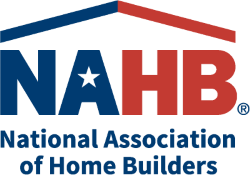NAHB Continues to Hammer Away at WOTUS Rule

NAHB’s aggressive lobbying efforts on the congressional and legal fronts to overturn the Biden administration’s new waters of the United States (“WOTUS”) rule is gaining strong momentum.
NAHB leaders recently testified on Capitol Hill and our leadership team met with several influential lawmakers. These successful lobbying efforts culminated in the House passing the Congressional Review Act (CRA) joint resolution of disapproval on March 9, which would rescind the administration’s new WOTUS rule that is scheduled to go into effect on March 20. The resolution was approved on a vote of 227-198, with nine Democrats voting in favor.
“NAHB commends this bipartisan House vote,” said NAHB Chairman Alicia Huey. “It makes no sense for human-made ditches and isolated ponds on private property to be subject to federal jurisdiction, but that’s exactly what the WOTUS rule does under its intrastate waters category. Adding uncertainty and delay to the federal permitting process needlessly raises housing costs and defers badly needed affordable housing projects.”
An identical resolution pending before the Senate has 49 Republican cosponsors and a vote could come as early as the week of March 13. It is still unclear whether the resolution will pass the Senate. Rarely has the CRA been used by both chambers of Congress to rescind an existing regulation. If the resolution ultimately is approved by the Senate, it will send a strong signal of congressional disapproval of the current WOTUS rule. However, President Biden would likely veto the resolution. NAHB will continue to urge the Senate to move forward and pass the resolution to keep pressure on the administration to change the WOTUS rule.
Sending a Loud and Clear Message on Capitol Hill
Huey and First Vice Chairman Carl Harris on March 8-9 held individual meetings on Capitol Hill with nearly two dozen members of Congress to discuss key housing issues, and WOTUS was right at the top of the list. The NAHB Senior Officers said that Biden’s WOTUS rule is a perfect example of federal overreach and is so vague that builders cannot determine whether the most basic activities undertaken on their land will subject them to the Clean Water Act’s permitting requirements. In short, the rule increases home building costs at a time when the nation is in the midst of a housing affordability crisis.
On March 8, Frank Murphy testified on behalf of NAHB during a House Small Business Committee hearing examining the administration’s WOTUS rule and its impact on the regulated community.
As chairman of NAHB’s Environmental Issues Committee and a builder who has been directly impacted by federal wetlands permitting requirements, Murphy told lawmakers that additional regulations under the new WOTUS rule “and their attendant administrative reviews and permitting processes make it more difficult for me to provide homes or apartments at a price point attainable for working families.”
Speaking in real-world terms, Murphy said the new WOTUS rule ”increases federal regulatory power over private property and increases litigation, permit requirements and lengthy delays for any business trying to comply. Because compliance costs for regulations are often incurred before home sales, builders and developers must essentially finance these additional carrying costs until the property is sold. The 2023 rule only adds to the headwinds that our industry faces.”
A month earlier on Feb. 8, Huey testified before Congress on this same topic and called the Biden WOTUS rule “fatally flawed.”
She called on lawmakers to direct the federal agencies to implement a durable and practical definition of WOTUS that will truly protect our nation’s water resources without infringing on states’ rights and triggering additional expensive, time-consuming permitting and regulatory requirements.
Making Our Voice Heard at the Supreme Court
NAHB believes the decision by the EPA and U.S. Army Corps of Engineers (Corps) to finalize the WOTUS definition is counterproductive and shortsighted — especially since the Supreme Court’s upcoming ruling under Sackett v. EPA is squarely focused on the legality of the significant nexus test, which is a critical part of the final rule. The verdict could come anytime within the next few weeks or months.
In practice, the significant nexus test has proven extremely difficult to apply consistently in the field, leaving developers and builders unable to discern for themselves which isolated wetlands, ephemeral streams, or even human-made drainage features, like roadside ditches, are federally jurisdictional under the CWA.
The new WOTUS rule radically extends the areas in which home builders are required to get federal permits. This will result in continued regulatory barriers to affordable housing as single-family and multifamily developers struggle to find the developable land necessary to produce the new affordable housing units this nation desperately needs.
NAHB has filed a friend-of-the-court brief in support of Idaho couple Chantell and Mike Sackett, who brought suit against the EPA over whether there are wetlands on their property that would force the couple to apply for a federal permit under the Clean Water Act.
A Supreme Court ruling in favor of the Sacketts could force the administration to scrap the worst parts of its WOTUS rule and return to the drawing board.
Given fierce congressional opposition to the rule and the strong legal ground of the Sacketts, NAHB’s message to the administration is twofold: First, if the administration is truly interested in knocking down barriers to affordable housing, it will direct the EPA and Corps to keep from implementing this rule until the Supreme Court issues its ruling in the Sackett case.
Second, because this WOTUS rule is fatally flawed, Congress should direct the agencies to scrap it and draft a new one that restores common sense and predictability to the federal wetlands permitting process while maintaining environmental protection of our nation’s waterways.
Source: National Association of Home Builders

